The second highest road in the city
Please note that this text is an extract from a reference work written in 1990. As a result, some of the content may not reflect recent research, changes and events.
Reaching 525 feet above sea-level over Hollingbury, and with extensive views to east and west, Ditchling Road is the highest road in Brighton outside the Woodingdean area, and was established as a turnpike road to Lindfield and Cuckfield in 1770 with a tollgate at the Patcham / Preston boundary near Osborne Road {112}.
Alongside the Level (q.v.) Ditchling Road was originally known as Brunswick Place North and retains several interesting buildings from the 1810s; no.3, probably by A.H.Wilds, and the adjacent composition, nos.5-13 which are adorned with balconies, verandahs, bow windows and a pediment on the centre-piece, are listed buildings. The Open Market opened on its present site in 1926, but was rebuilt in 1960 (see “Markets”). No.93 Ditchling Road housed corporation slipper baths from 1891 until about 1932. Facing the northern side of the Level, no.2 is an attractive yellow-brick house with a Doric doorway, while the adjacent nos.4-8 were once home to the LadyChichesterHospital (see “Clifton Hill (Windlesham Road)”). Back along the main length of Ditchling Road, ascending the hill, are nos.12-24, attractive cottages formerly known as Ditchling Terrace. No.26 was built as a branch of the Brighton and Hove Dispensary in 1885. {44,83,9 4}
The Brighton Business Centre at the corner of Viaduct Road opened in 1987 in the former Chichester Diocesan Training College for Schoolmistresses, erected in 1854 (see “Viaduct Road”).
The borough boundary ran along the western side of Ditchling Road from Viaduct Road to Florence Place until 1873. In the mid nineteenth century several large residences were built on the eastern, or Brighton, side; these included Sylvan Hall, the home of Henry Infield, which gave its name to the estate of council flats developed on the site from 1949. The attractive nos.68-82 Ditchling Road are a row of 1850s semi-detached villas originally known as Round Hill Park; they are now included in the Round Hill conservation area along with the former Ranelagh Terrace to the north. The western, or Preston, side of Ditchling Road was developed from the 1880s; large, semi-detached houses with Corinthian doorways line the road to the south, impressive red-brick housing was erected to the north. {83,109}
Opposite Round Hill Road stood St Saviour’s Church, built in 1886 by Edmund Scott and F.T.Cawthorn. Faced in flint with brick dressings, the church was dominated by a very large reredos by W.Slater and R.H.Carpenter which was removed from Chichester Cathedral in 1904-5. A chapel was added in 1889, but the church closed in 1981 and was demolished in 1983 to be replaced by the flats of St Saviour’s Court. A red-brick archway remains in Vere Road , and the parish has merged with St Augustine’s. The area of attractive terraced housing to the south of the railway and west of Ditchling Road came to be known as St Saviour’s in the late 1980s following the formation of a residents’ association of that name.
At the end of Florence Place is the Freehold Burial Ground, given to the Brighton Synagogue congregation in 1826 by T.R.Kemp for use as a cemetery; it has an unusual octagonal, red-brick mortuary chapel with a turret roof {112}. St Matthias’s Church to the north of Fiveways was built in 1906-7 by Lacy W.Ridge in Early English style, a red-brick building with a wooden hammer-beam roof, a small spire, and an apsidal chancel. It was consecrated in 1912. {1,45,123}
Ditchling Road then continues over the slopes of Hollingbury (q.v.) to Old Boat Corner, the junction with Carden Avenue and Coldean Lane. Lying about 475 feet above sea-level, this crossroads is named from an upturned boat that was once used as a shepherd’s hovel {128}, and lay within a detached part of Falmer parish until 1934; it was then transferred to Stanmer , but was annexed by Brighton in 1952. The old crossroads signpost is now exhibited at StanmerRuralMuseum. The Brighton bypass will run through a cutting underneath Ditchling Road to the south of the crossroads; there will be an interchange with Carden Avenue to the west and an eastbound slip road from Coldean Lane to the east.
The road then leads out of the borough to Ditchling Beacon which, at 813 feet above sea-level, is the highest hill in East Sussex and the fourth highest point on the South Downs; only Butser Hill, Littleton Down and Linch Down are higher. The summit area, which has an Iron Age entrenchment, is owned jointly by the National Trust and Brighton Council which purchased 386 acres of High Park Farm in October 1928. {1,305}
Any numerical cross-references in the text above refer to resources in the Sources and Bibliography section of the Encyclopaedia of Brighton by Tim Carder.

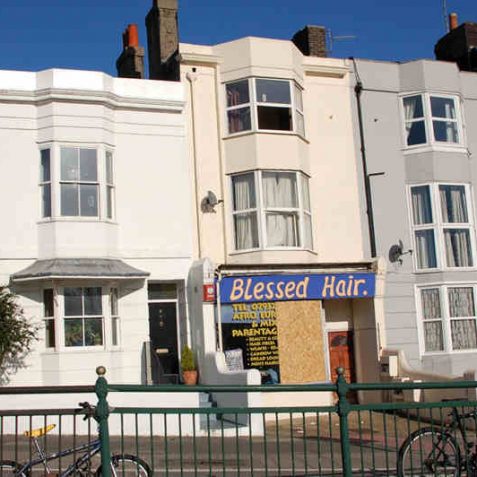
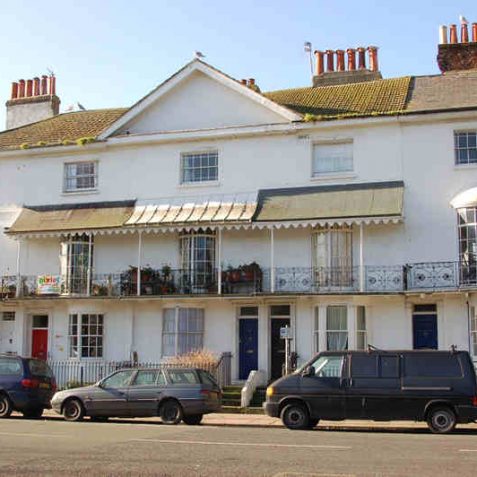
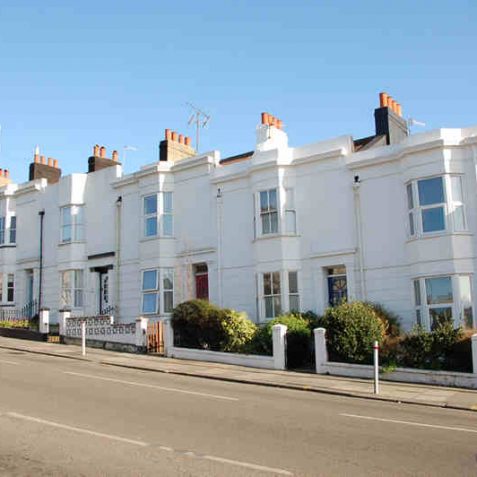
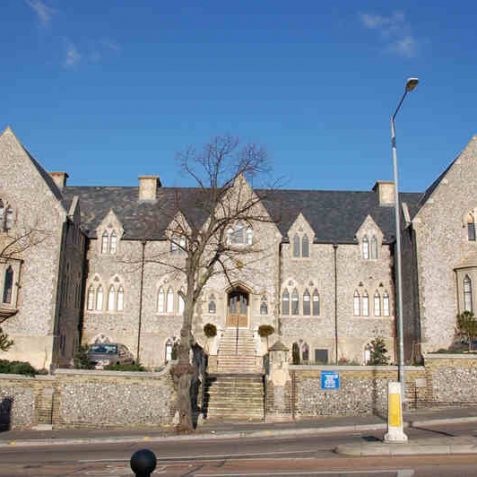
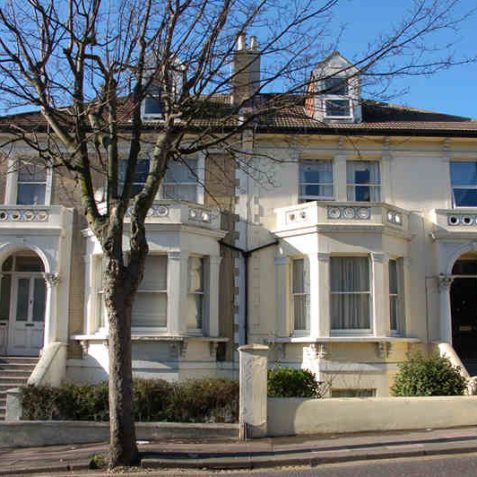
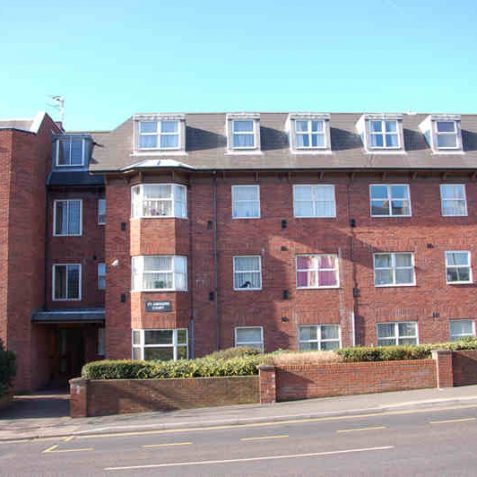
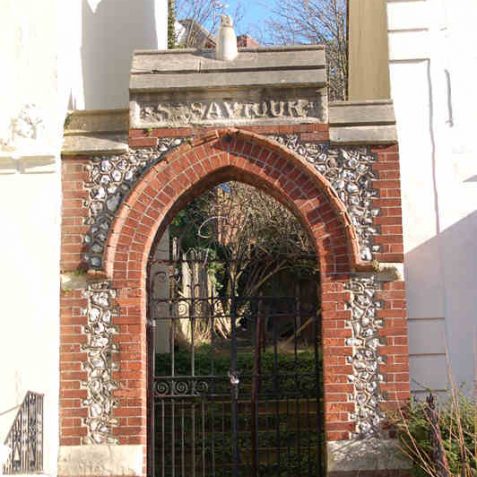

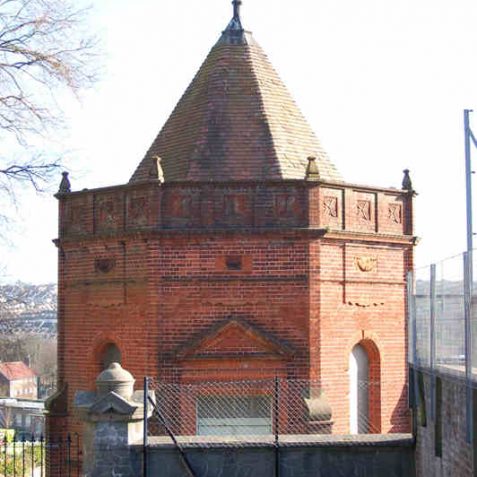
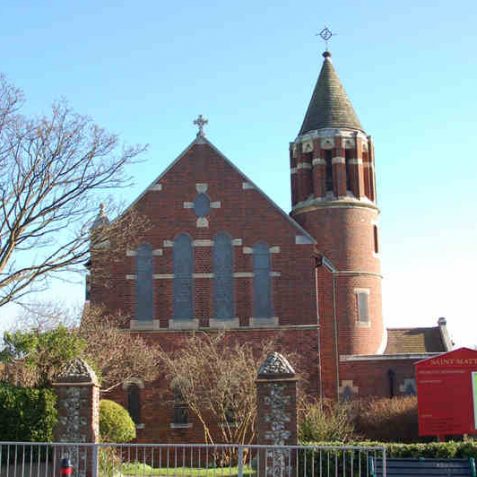
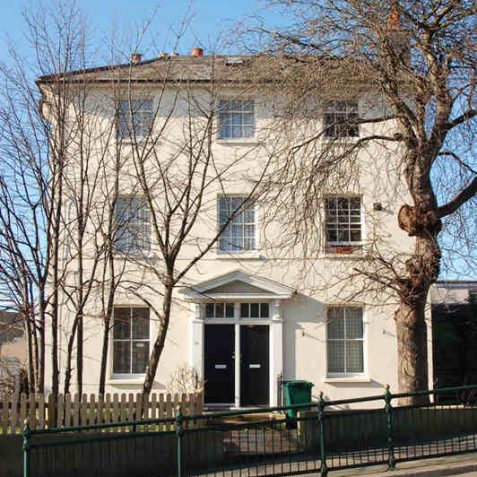




Comments about this page
This building must have replaced the old war time prefab that was known as 2 Ditchling Road.
This is an interesting page. My great-grandfather was Henry Infield, his son Albert my grandfather. They lived in Sylvan Lodge. I would be interested to hear from anyone who has more knowledge of this home when my ancestors lived there.
The Brighton Business Centre at the junction of Viaduct and Ditchling Roads has obviously seen numerous occupants and uses. During the 1950s and 1960s it was the Territorial Army’s Records Office.
Does anyone recall 5 Ditchling Road c1939? I am researching a man called William Coo who died there. I am not clear if the address relating to the photo is renumbered? Is the Lady Chichester Hospital involved?
My great-grandfather was Freddrick Waller, Head Gardener of Sylvan Lodge during 1908. I would be so interested to find out more about the house and the family who lived in it. I do have an article written in Garden Life about the gardens and his work. I have just started my family tree so would love to hear anything about this lovely old Victorian garden. His daughter was my grandmother.
Although I lived with my parents in Hollingbury in the 1960’s, my school friends and I attended St Saviour’s Church. On Friday evenings there was a youth club in the crypt at which beat groups (including my own) often performed. The club was overseen by the late Rev “Kipper” McCrae, who was one of the nicest and most benignly influential people I have ever met. Most people alive and conscious at the time remember where they were that Friday evening, 22nd November 1963, when they heard the news of JFK’s assassination; my friends and I were with the Rev McCrae at Confirmation classes in the St Saviour’s vicarage. Although I have not lived in Brighton since 1969, my mother, stepfather, and two of my children live there. I have always thought it scandalous that St Saviour’s was destroyed but, until reading this article, I was unaware that the Vere Road entrance had been preserved. Thank you for that, I shall ensure that I visit it next time I am in Brighton. Does anyone know what happened to the reredos? It really was impressive.
Sylvan Hall. My grandparents lived in this beautiful old house during the early 50’s. They lived in the basement, an interesting apartment, windows facing a wall, dark rooms as I recall. Grandad used to find interesting places in the extensive gardens for us kids to see. The monkey bars? A large iron frame cage type construction. I recall the front entrance, with sloping grass bank from the pathway to the front door. I rolled down that slope and cut my knee rather badly on a slice of flint stone. I think my grandparents were residents for about a year, grandad used to keep the furnace burning, but the coal dust did harm to his already weak chest.
Bonny Cother, your grandfather must have been Mr Smith. I lived in a flat in the old house at Sylvan Hall from 1948 to about 1952 and I remember him. I am not surprised to hear he had a weak chest, he did cough a bit. We called the monkey bars the monkey cage but I believe it really used to be an aviary. We were the only monkeys, climbing up the bars and the big tree in the centre and doing somersaults. I don’t know how none of us came a cropper. There were several children in the old flats. There was Mary in the basement, older than the rest and not one to hang upside down from a pole with her knickers showing. In the attic flat was Doreen Smith who had ringlets. Beneath her were the three Hogan girls, Angela, Sheila and Cristobel. Their father was headmaster of a Catholic school. In a flat on the ground floor at the back lived Jill Radcliff, and above her myself and my baby brother – the only boy. I have a photograph of all of us beside the derelict fountain. Maybe I should upload it.
I used to attend scouts at St Saviours and have fond recollections of evenings spent in the crypt doing scout type things. I lived in Springfield Road from about 1964 until 1988 when I moved to Somerset. I always remember the area with great happiness and often return to look around it and see the changes. St Saviours Court was built by a company called Postyle Homes and I was the contracts manager for the dry lining company during its construction so mixed thoughts on that one. I also, with fondness remember Jack and Betty who ran the Roundhill public house over the road from the church and the monkey that lived in a cage up high just a few doors up from the pub. The Downs school was my “home” for about 7 years and the standard was good compared to many others. I also remember the snow of 1967 being so deep I had to be carried by my father. A superb area and some wonderful memories.
Oh my gosh, Eleanor, Mary was my cousin, now sadly deceased. Mr. Cother was my grandfather, who lived with my grandmother in the basement. He did cough. They had an Alsatian dog for awhile there, Rolf. I was four/five years old and spent time with them. You are right about the monkey cage, but I feel unless there was a net across it, birds would have flown free. So lovely to see your note.
Does anyone know what the silver turrets on Ditchling Road were built for? One is on the pub on the corner of Florence place; the other is across the road on the corner of Upper Hollingdean Road. Thanks
Sylvan Hall was once the home of the colourful Kate Evelyn Meyrick (née Nason) (1875-1933). She moved to the property in 1914 with her husband, Dr Ferdinand Richard Holmes Meyrick (d. 1941), and their eight children. Described by them as ‘a lovely old-world house’, they stayed there until 1918. Here the doctor, whose surgery was at 34 Wakefield Road, ran the establishment as a home for the mentally ill. These included badly shell-shocked soldiers. Kate, herself the daughter of a doctor, assisted him and, following lessons in hypnotism and suggestive therapeutics, was able to do useful work with chronic nerve cases. The couple, whose daughters attended Roedean School, frequently gave entertainments in the grounds, sometimes for the soldiers themselves and sometimes to raise funds for them.
In 1918, she left her husband for good on the grounds of his cruelty (there had been a year’s separation prior to the move to Brighton). Kate’s overriding motivation in all her subsequent dealings was to provide for her children rather than create wealth for herself (they did well – three of her daughters married into the aristocracy).
By the following year had opened her first London business venture, Dalton’s Club in Leicester Square, which would often be targeted by the police on account of its reputation as a pick-up point for prostitutes.
‘Ma Meyrick’, as she became known, appeared in a lightly disguised form in Evelyn Waugh’s Brideshead Revisited. She went on to open many more establishments, most famously the 43 Club in Gerrard Street, which was noted for attracting a mix of bohemians, writers, aristocrats and gangsters – particularly members of the Sabini gang and their racetrack rivals. The clubs were frequently raided, since DORA (the Defence of the Realm Act, which prohibited the sale of alcohol after 10 pm) was still in force. Fines were followed by periods of imprisonment on other charges. In January 1929, she achieved notoriety when she was tried at the Old Bailey as a co-defendant in the ‘Goddard Case’, one of the most important police corruption trials of the century. Convicted of bribing the police, she was sentenced to 15 months’ hard labour in Holloway jail.
She was by no means universally popular – The People newspaper had described her as ‘one of the most dangerous women in London’ – but was nevertheless prepared to give the city what it wanted – dancing, gaiety and the best of good times. For thousands of London night club habitués, the Meyrick name became synonymous with frivolous fun-making even after she fell foul of the law and became a regular inmate in Holloway jail. However, the five jail sentences which the ‘Queen of the London Clubs’ served at various times and which totalled three years three months took their toll on her health, even though she always returned to her night club career. She died of broncho-pneumonia in January 1933 at the early age of 57.
Kate Meyrick saw, by her own estimate, the phenomenal sum of £500,000 pass through her hands in the course of her nightclub career. Her estate on her death amounted to a mere £58. Her autobiography Secrets of the 43 Club is worth a read if you can get it.
My family and I lived here from 1966 to 1991 where the basement was a hairdressing salon ” Thomas Irvines”. It was a shame that the lovely door was replaced with a uvpc one in that lovely Doric doorway. I believe in days gone by the house was a clinic.
I lived in Old Sylvan Hall (the big white house in Canterbury Drive)and my dad worked for Brighton Council .He looked after the maintenance and boilers for the heating.His name was Ralph Smith and my mum was Jean.My name is Lynn Smith and I went to the Downs and then Margaret Hardy.I do remember a lot of people and we moved from Sylvan Hall to The Bull Inn Pub at Henfield.Love to hear from anybody.
Add a comment about this page